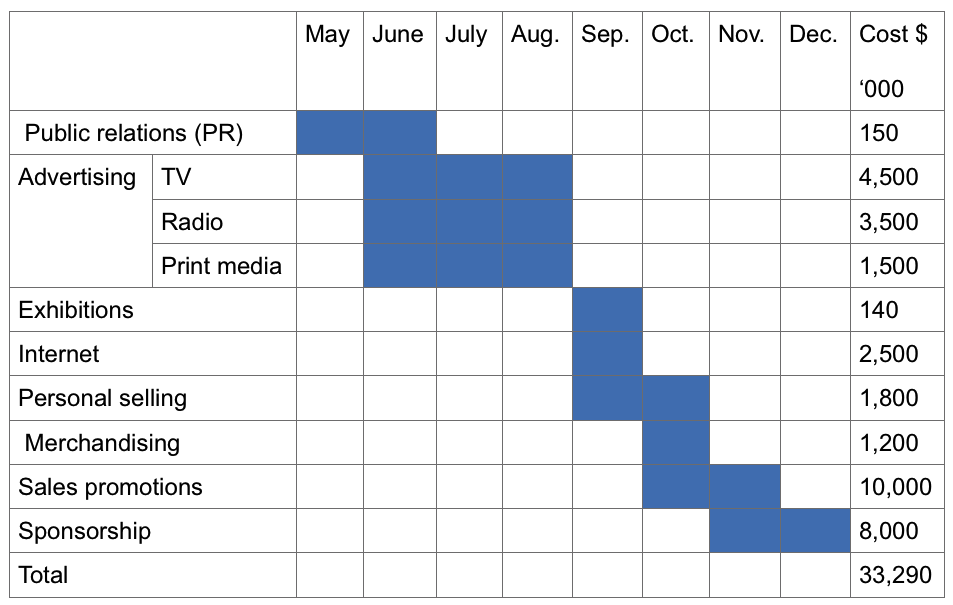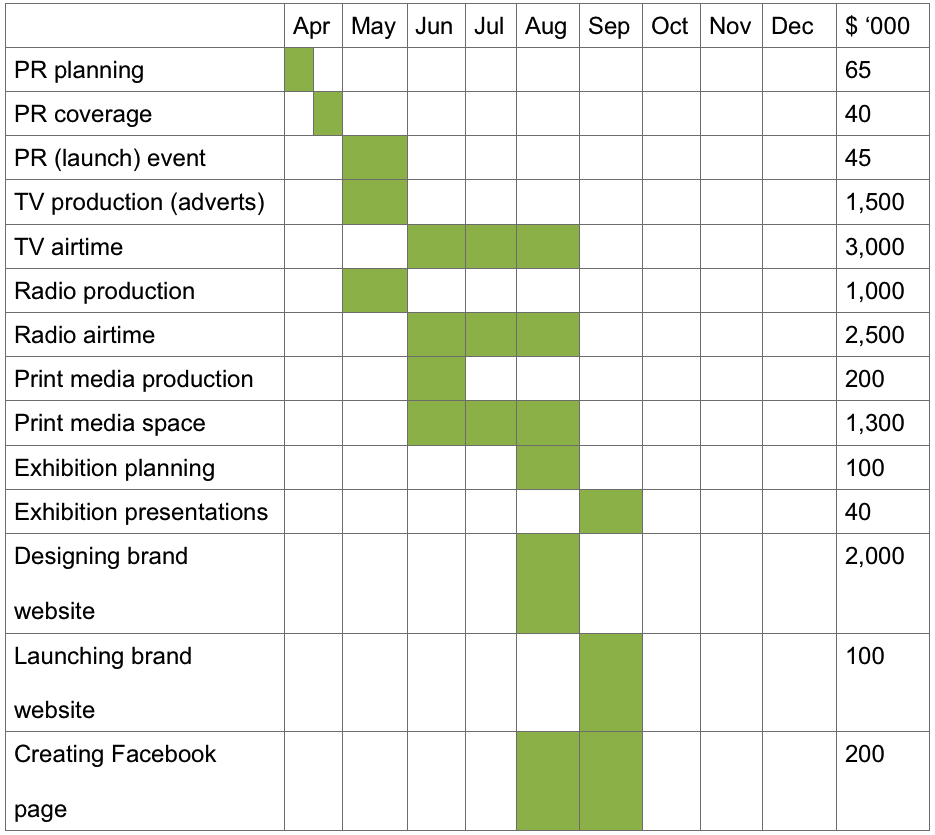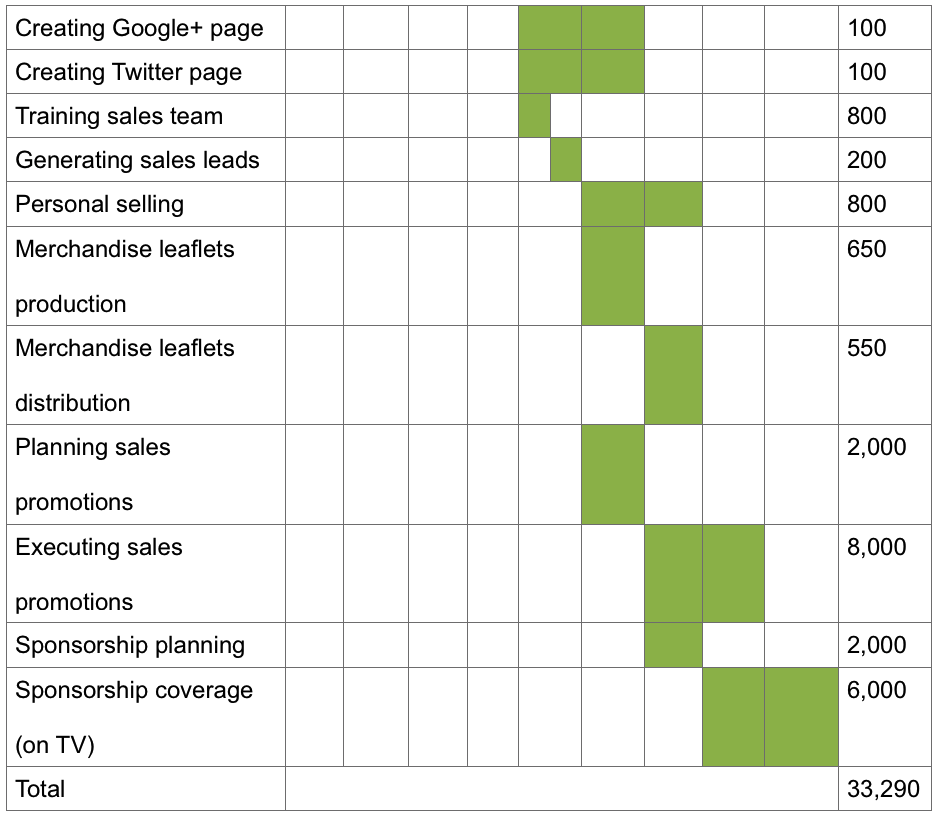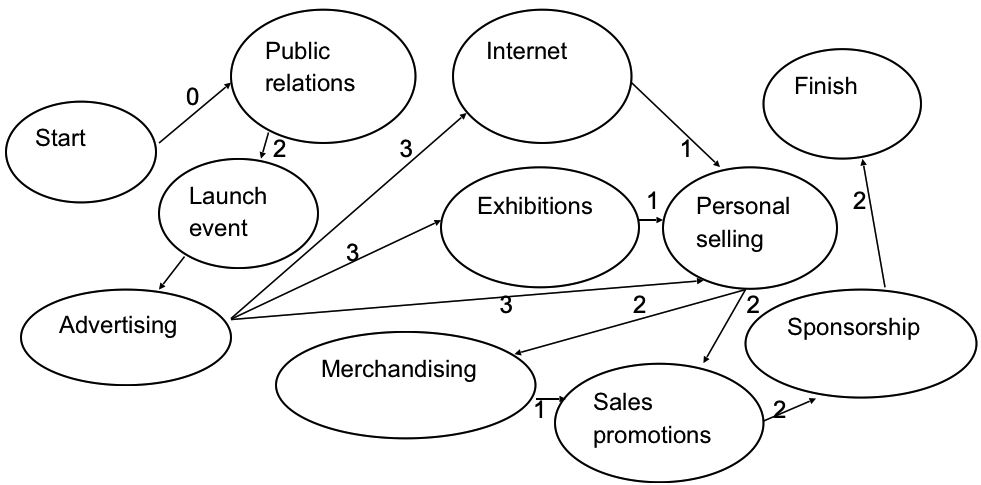Introduction
The purpose of this paper is to develop an integrated marketing communications campaign for Samsung Galaxy S8. The campaign will be used to market the product in China. Samsung Galaxy S8 is a new product that will be launched to replace Samsung Galaxy S7.
The marketing communications campaign will be developed using the SOSTAC framework. In this regard, it will focus on six areas, which include situation analysis, objectives, strategy, tactics, actions, and controls (Drummond, Ensor & Ashford 2010, p. 117).
Situation Analysis
Market Trends
China is the largest market for mobile phones in the world. In 2013, nearly 80% of the mobile phones that were sold in China were smartphones (He 2013, pp. 112-120).
The main factor that accounts for the rapid growth of the market is the country’s strong economic growth that has led to emergence of a large middle class (Johnsons 2012, pp. 17-20).
Competition in the Chinese market is high because of the presence of a large number of firms that are competing based on price and product quality. This strategy is informed by the fact that smartphones are considered as high involvement products in China (Shimp & Andrews 2013, p. 119).
PEST Factors
Deregulation of the Chinese advertising industry is the most important political factor since it has enabled several firms to join the market. The resulting competition will reduce the cost of advertising in China (Ranchhod & Marandi 2005, p. 91).
Rapid economic growth in China has improved the demand for smartphones. Thus, investing in marketing communications activities such as advertising and public relations is likely to have a high return on investments.
High literacy level, access to print, and electronic media will improve the effectiveness of marketing communications initiatives since a large number of potential customers can be reached (Hughes & Fill 2003, p. 89).
Increased access to advanced technologies such as the internet and social media will also improve the effectiveness of marketing communications in China (Smith & Zook 2011, p. 245).
Current Marketing Communications Strategy
Currently, the company’s marketing communications mix includes advertising, public relations, and sales promotions (Pride 2004, p.212). The main objective of these communications tools is to create brand awareness and to differentiate the company’s products in the market.
Consequently, the messages conveyed to the public focus on highlighting product features. The main strength of the strategy is that it will enable the company to build a strong brand image (Kitchen & Pelsmacker 2004, p. 217).
However, the company adapts its adverts to suit the needs of each market. This increases the risk of conveying inconsistent messages to the public (Pride 2004, p.213).
Objectives
AIDA Model
The AIDA model focuses on four areas of marketing communications namely, attention, interest, desire, and action (Yeshin 2012, p. 247). Different colors, themes and backgrounds will be used in adverts to attract customers’ attention.
Interest will be created by highlighting the advantages and benefits of using Samsung Galaxy S8 such as access to near field communication functionality. Desire will be created by highlighting the ways in which the product will satisfy customers’ needs (Gabrielli & Balboni 2010, pp. 275-290).
These include ability to manage information and enjoy entertainment while on the move. As a result, customers will act by purchasing the product (Chen 2012, pp. 23-25).
ATR Model
The ATR model focuses on awareness, trial, and repurchase (Koekemoer 2004, p. 115). Strong brand awareness will be created through adverts and public relations to motivate customers to purchase the product.
Samsung Galaxy S8 will be distributed through retail shops, online stores, and independent wholesalers to enable customers to purchase/ try it (Griffin 2002, pp. 237-246). Excellent customer service will be provided to improve chances of repurchase (Reid 2002, pp. 37-52).
Based on the AIDA and ATR models, the following objectives will be adopted. The first objective is to increase brand awareness by 5% in the first six months. The second objective is to increase market share by 4% in the first six months. The third objective is to increase sales by 5% in the first six months.
Strategy
Segmentation
Psychographic segmentation will be used to identify the markets in which Samsung Galaxy S8 will be sold. The variables that will be used to identify the markets include customers’ lifestyles, interest, education, socio-economic status, and personality (Kotler 2011, p. 78).
Based on these variables, the markets that will be served include education, consumer, and business.
Targeting
In the education market, the product will target customers who are interested in smartphones that can facilitate access to academic material through the internet and online libraries.
In the consumer market, Samsung Galaxy S8 will target individuals who are interested in a multipurpose communication and entertainment device.
In the business market, the product will target companies that require multipurpose devices that enable their personnel to manage information and to do business while on the move.
Positioning
Samsung Galaxy S8 will be positioned as a high-end smartphone that offers superior functionality, reliable operating system, and portability at affordable price. Thus, marketing communications activities such as advertising will focus on highlighting its features and benefits (Olof 2006 pp. 23-33).
The push and pull promotional strategies will be used to market the product. The push strategy will focus on improving brand visibility to encourage customers to purchase the product.
Thus, “it will involve the application of techniques such as direct selling to customers and place of auction displays” (Tian 2011, pp. 242-244). The pull strategy will focus on creating interest to enable customers to look actively for Samsung Galaxy S8 in the market (Gurau 2008, pp. 169-184).
Tactics
Objectives
The main objective of the communications plan is to create product awareness. Product awareness will enable the customers to identify with Samsung Galaxy S8 (Ouwersloot & Thompsons 2008, p. 92).
The resulting improvement in brand image will enable the product to penetrate the market (Kim 2006, pp. 126-137). The second objective is to use various tactics to stimulate desire among customers so that they can purchase the product.
Communications Tools
A variety of marketing communications tools will be used to reach the target audience. The tools include public relations, advertising, personal selling, sales promotions, exhibitions, sponsorship, point of sale merchandising, and internet marketing.
Public relations will involve attracting media coverage by hosting events to brief key stakeholders and potential customers about the product and its launch date. Sales promotions will include competitions and coupons that will enable customers to win prizes by purchasing the product (Yang & Trim 2008, pp. 272-278).
The company will sponsor one popular TV show to reach as many customers as possible. To convince customers to purchase the product, the sale team of the company in retail stores will do exhibitions and personal selling.
Internet marketing will involve advertising the product through its brand website and popular websites such as Face book, Google+ and Twitter.
Media Selection
The target market consists of customers with different lifestyles and socio-economic backgrounds. Thus, it is important to use different types of media to reach the target audience (Hackley 2010, p. 278). The print and electronic media will be used to market the product.
The print media include popular magazines, newspapers, brochures, and product catalogue. The print media will target institutions and customers who have time to read.
The electronic media include radio channels, mobile phones, TV channels, and the internet (Percy 2008, p. 241). The electronic media will target customers who have access to multimedia devices such as radios.
The marketing communications tools will be used to position Samsung Galaxy S8 as a smartphone that enhances the lifestyle of its user. In this regard, the message to be conveyed by the communications tools will focus on three themes namely, excellent functionality, reliability, and affordability.
These brand attributes will be reflected in the marketing mix. Specifically, different color and screen size options will be provided to suit customers’ needs (McCray, Gonzalez & Darling 2011, pp. 240-255). Moreover, a three-level distribution channel will be used to enhance brand visibility.
Timing and Costs
Gantt chart 1 summarizes the order in which the tactics will be used and their costs. The marketing communications plan will be implemented in eight months.

Actions
Implementation
The implementation of the communications plan will begin in April and end in December 2014. The first task will be to design adverts and all forms of written messages. The tasks, time, and budget required to prepare each marketing communications solution are summarized in Gantt chart 2.


Project Management
Public relations will be the first tool to be used to create awareness about the product before its launch. After the launch, advertising will be used to reinforce the information in the public domain about the product (Yeshin 2012, p. 67).
This will be followed by exhibitions and internet marketing to engage customers in conversations about the product. In addition, personal selling will be used in the business market segment to generate sales leads (Lars, Torp & Firat 2005, pp. 156-167).
This will be followed by sales promotions and in-store merchandising activities to promote sales (Hede & Kellett 2011, pp. 987-1004). In order to reinforce the messages conveyed by the adverts, a popular TV program will be sponsored so that the product can get more coverage (Caemmerer 2009, pp. 524-538).
The interrelationships among these activities are presented in the critical path diagram.

Control
The success of the communications campaign will be tracked by measuring sales, brand awareness, expenditure, and market share. Monthly sales will be reviewed to determine the extent to which the company is able to achieve its targets.
In addition, monthly sales will be compared with those of the competitors to determine the product’s market share (Kazmi 2007, p. 211). Two surveys will be conducted to measure brand awareness. Monthly expenditures will be reviewed to ensure that the resources that have been allocated for the campaign are used appropriately.
Marketing Research
The objectives of marketing research will include measuring brand awareness, as well as, obtaining customers’ feedback concerning the product and the suitability of tactics such as sales promotions and adverts. Online surveys will be used to collect data from the public concerning brand awareness and sales promotions.
Interviews will also be used to collect information about the market from key informants such as the industry’s regulator. The results of the marketing research will be used to improve the campaign and the product (Histrich 2000, p. 314).
References
Caemmerer, B 2009, ‘The planning and implementation of integrated marketing communications’, Marketing Intelligence and Planning, vol. 27. no. 4, pp. 524-538.
Chen, P 2012, ‘The importance of marketing strategy: gaining the competitive edge with integrated marketing communications (IMC)’, Strategic Direction, vol. 22. no. 8, pp. 23-25.
Drummond, G, Ensor, J & Ashford, R 2010, Strategic marketing, Oxford University Press, London.
Gabrielli, V & Balboni, B 2010, ‘SME practice towards integrated marketing communications’, Marketing Intelligence and Planning, vol. 28. no. 3, pp. 275-290.
Griffin, C 2002, ‘Strategic planning for the internal marketing and communication of facilities management’, Journal of Facilities Management, vol. 1. no. 3, pp. 237-246.
Gurau, C 2008, ‘Integrated online marketing communication: implementation and management’, Journal of Communication Management, vol. 12. no. 2, pp. 169-184.
Hackely, C 2010, Advertising and promotion, McGraw-Hill, New York.
He, N 2013, ‘How to maintain sustainable competitive advantages: case study on the evolution of organizational strategic management’, International Journal of Business Administration, vol. 3. no. 5, pp. 112-120.
Hede, A & Kellett, P 2011, ‘Marketing communications for special events: analyzing managerial practice, consumer perceptions, and preferences’, European Journal of Marketing, vol. 45. no. 6, pp. 987-1004.
Hisrich, R 2000, Marketing, John Wiley and Sons, New York.
Hughes, G & Fill, C 2003, Marketing communications, John Wiley and Sons, New York.
Kazmi, S 2007, Marketing management, Sage, London.
Kim, Y 2006, ‘Do South Korean companies need to obscure their country-of-origin image: a case of Samsung’, International Journal of Corporate Communications, vol. 11. no. 2, pp. 126-137.
Kitchen, P & Pelsmacker, P 2004, Integrated marketing communications, Palgrave, London.
Koekemoer, L 2004, Marketing communications, Sage, London.
Kotler, P 2011, Marketing: an introduction, Pearson Education, Upper Saddle River.
Johnsons, M 2012, ‘Attraction and retaining customers in a competitive market’, Strategic Direction, vol. 28. no. 1, pp. 17-20.
Lars, C & Torp, S & Firat, F 2005, ‘Integrated marketing communication and post-modernity’, International Journal of Corporate Communications, vol. 10. no. 2, pp. 156-167.
McCray, J, Gonzalez, J & Darling, J 2011, ‘Crisis management in smartphones: the case of Nokia vs. Apple’, European Business Review, vol. 23. no. 3, pp. 240-255.
Olof, H 2006, ‘Integrated marketing communication: from tactics to strategy, International’, Journal of Corporate Communications, vol. 11. no. 1, pp. 23-33.
Ouwersloot, H & Thompsons, D 2008, Integrated marketing communications, Sage, London.
Percy, L 2008, Strategic integrated marketing communication, Routledge, New York.
Pride, W 2004, Marketing, McGraw-Hill, New York.
Ranchhod, A & Marandi, E 2005, Strategic marketing in practice, McGraw-Hill, New York.
Reid, M 2002, ‘Building strong brands through the management of integrated marketing communications’, International Journal of Wine Marketing, vol. 14. no. 3, pp. 37-52.
Shimp, T & Andrews, C 2013, Advertising promotion and other aspects of integrated marketing, Taylor & Francis, Boston.
Smith, P & Zook, Z 2011, Marketing communications, Palgrave, London.
Tian, R 2011, ‘International communications strategy: development in cross-cultural communications, PR, and social media’, Journal of Consumer Marketing, vol. 28. no. 3, pp. 242-244.
Yang, L Trim, P 2008, ‘Entering the South Korean market: a marketing-planning process model for marketers based in overseas companies’, Business Strategy Series, vol. 9. no. 5, pp. 272-278.
Yeshin, T 2012, Integrated marketing communication, Pearson Education, Upper Saddle River.